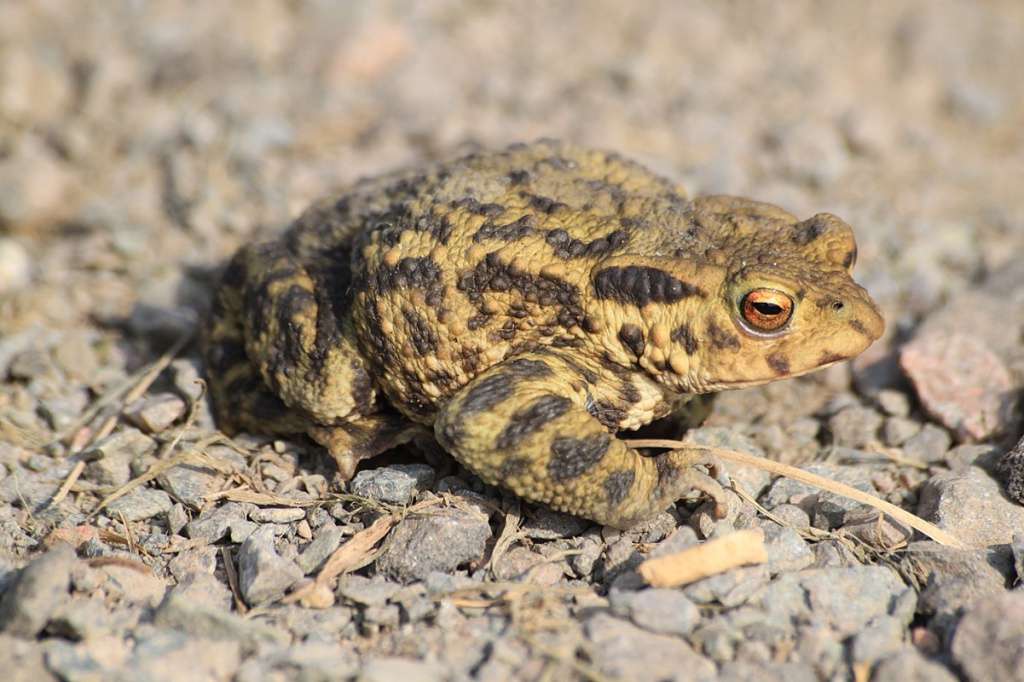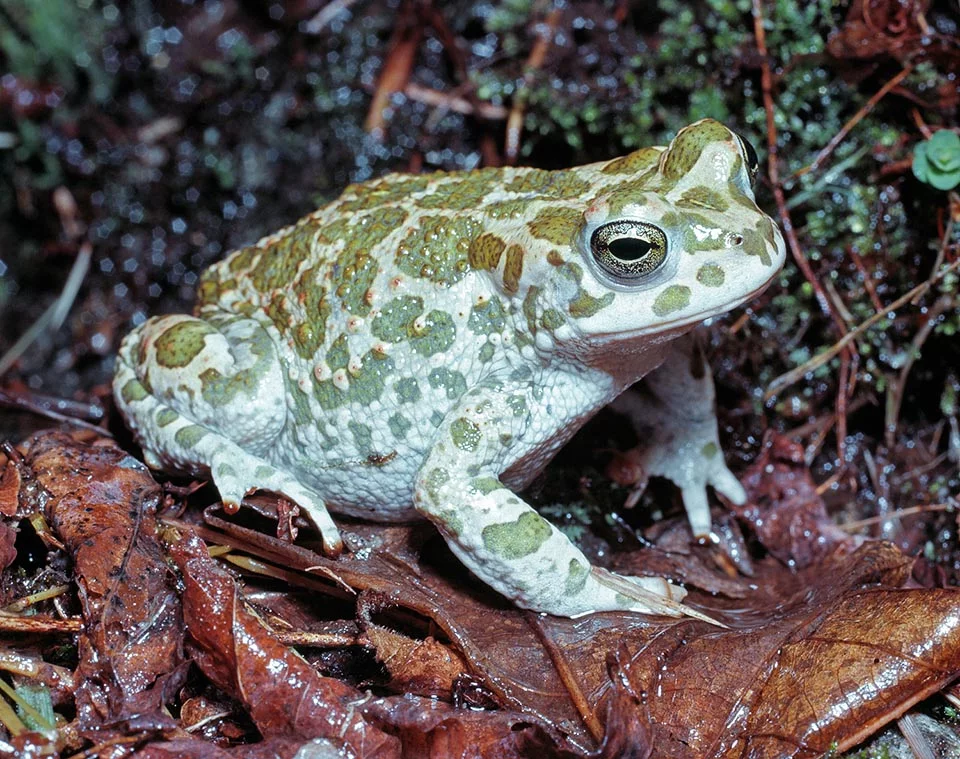
These frogs are quite prevalent throughout most of their area, and their vivid underbellies serve as a warning of this. They have minor poisons that can be released through their skin. Their green and black skin is covered with tiny tubercles, giving them a toad-like look even though they are not actual toads. Their vocalizations, which are mostly made by males during the breeding season, are significantly different from those of other frogs. They are a species that is quite easy to maintain, and are frequently maintained as pets in both land, and water vivaria. Their behaviour, vocalizations, and learning abilities have all received a fair amount of attention, and they are commonly employed in scientific studies.
Physical Appearance
Oriental fire-bellied toads can have black mottling on their dorsal regions and can be brilliant, gray, or brownish green in colour. B. orientalis has a vividly colored ventral region, similar to other Bombina species, that can be red, yellow, or orange-red and is speckled with dark dots. Typically, the toe and finger tips appear red. The most noticeable tubercles of the Bombina genus are seen on the skin’s upper surface. This toad is not a true toad, despite the fact that it is frequently called a toad. They can grow to be about 3.8-5.1 centimeters (1.5-2.0 in) long and 28-57 grams in weight. The males’ nuptial pads can tell males and females apart on their first and second fingers.
Habitat
The toad can be found in Korea, northeastern Russia (where they are becoming increasingly rare), northeastern China, and possibly southern Japan, more specifically the Tsushima Strait. In Broward County, Florida, the US, there have been numerous instances of escaped specimens, particularly in close proximity to an animal importer’s facility.
There haven’t been any other accounts of similar incidents in the US, and there aren’t any established runaway populations either. They live in slow-moving streams or ponds and are semiaquatic. When on land, they frequently inhabit broadleaved and coniferous woods. They can be found up to 1,100 meters above sea level (3,600 ft). They can live and even breed in highly polluted water because, especially when compared to other frogs, they are very tolerant to environmental perturbation.
Food
Oriental fire-bellied toad larvae eat algae, fungi, debris, plants, and protozoa. As adults, they eat worms, mollusks, insects, and other terrestrial invertebrates. Wild specimens contain stronger poisons because their food in the wild contributes to their toxicity. Oriental fire-bellied toads must leap at their prey because they are unable to extend their tongues to capture it.
Breeding
Around the middle of May, when the weather starts to warm up, breeding takes place. The toads come out of hibernation at this time. Males use a light call that sounds like a musical triangle to communicate with females. Females produce a huge cluster of 40–110 eggs close to the water’s surface. In 6 to 8 weeks, the tadpoles start to grow legs, and by August or September, they have completed their metamorphosis.
Keeping as Pet

Housing
Get a 10-gallon tank at the very least for this animal’s enclosure. In a tank this size, you can keep two or three frogs. Plan on needing roughly 4 gallons of tank space per frog if you get more. For their size, horizontal or long tanks offer more floor space. A tight lid is essential. If given the chance, these curious tiny frogs will attempt to flee. The top ought to have enough ventilation. The best setup for a semi-aquatic tank is a third to half land area, with two to four inches of water covering the remaining space. Rocks that are rounded can be used to adorn the land. A filter should be used on the water, and water changes should be made frequently. Only use bottled spring water or dechlorinated old water in the tank. Since these frogs produce a lot of waste, frequent partial water changes are required.
Light
Other than a cycle of day and night, these frogs don’t have any particular lighting needs. Many scientists concur that UVB lighting is not necessary for this species. A small amount of UVB exposure each day, according to some experts, won’t harm you and may even improve calcium absorption. The most crucial requirement for this species is dampness. Sometimes an enclosure’s drying out from too much sunshine can harm the animal’s delicate skin. Your frog could become anxious if there are long periods of light.
Heat
These frogs can tolerate regular human room temperature, thus a heater is typically not required. However, slightly warmer temps are preferable, around 75 to 78 F. To measure the temperature precisely, use a thermometer. Create a basking area with a 12-hour-per-day low-wattage bulb set up to parallel the day/night cycle. If you maintain the substrate moist, the two together will assist boost tank humidity. You can heat the tank by placing an under-tank heat mat under the terrestrial area of the enclosure.
Humidity
For this species, humidity is crucial, therefore choose a substrate that will let you sustain high humidity, and keep it moist by misting it with water every day. Always aim for a humidity level between 65 and 80 percent. Use a hygrometer or humidity gauge to monitor the moisture content. Invest in a humidifier or mister for your cage if you find it difficult to manage the moisture on your own. You may automate it by setting it to sound at predetermined intervals or whenever there is a low humidity level. If everything else fails, the water area of your frog’s enclosure can help provide enough moisture and humidity.
Table





